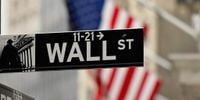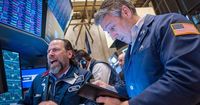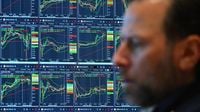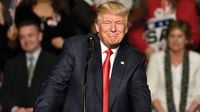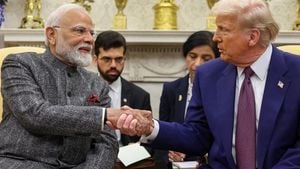U.S. stocks experienced a dramatic fall on Friday, with the Dow Jones Industrial Average tumbling over 1,600 points, marking a 3.99% drop as fears of a global trade war escalated. This followed President Donald Trump’s announcement of sweeping tariffs that have sent shockwaves through the financial markets, raising concerns of a potential recession.
The S&P 500 fell 4.84% to 5,396.52, while the tech-heavy Nasdaq Composite plunged 5.97% to 16,550.61, both suffering their worst single-day losses since June 2020. The S&P 500 is now down approximately 12% from its February high, hitting its lowest level since Trump’s election victory in November.
In a statement that has become emblematic of the current economic climate, Trump indicated that the tariffs would start at a baseline rate of 10% on all countries, effective April 5, 2025. However, the tariffs on China are particularly severe, with the effective rate reaching 54% when taking into account existing duties. This has led to a massive sell-off across the board, with over 400 constituents of the S&P 500 affected.
Prominent companies like Nike saw their stocks drop by 14%, while Apple fell by 9%. Other retailers heavily reliant on imports suffered even more. Five Below experienced a staggering drop of nearly 28%, Dollar Tree fell 13%, and Gap plunged 20%. The broad sell-off reflects a market grappling with the implications of Trump’s tariff strategy.
The situation was exacerbated by China’s announcement of a retaliatory 34% tariff on U.S. imports, set to take effect on April 10, 2025. This move is seen as a direct counter to the tariffs imposed by the Trump administration, which have already included a 20% tariff on Chinese goods. The combination of these tariffs has left investors feeling jittery, with many fearing that the escalating trade tensions could lead to a full-blown global trade war.
As trading continued, the Dow Jones Industrial Average sank further, ultimately falling 1,679.39 points or 3.98%. The S&P 500 and Nasdaq Composite also faced significant declines, with the Nasdaq now down 20% from its record high of 20,173.89 set last December. This downturn has led to the S&P 500 entering correction territory, defined as a 10% drop from a record high.
In response to the turmoil, investors have shifted towards safer assets, causing the yield on the benchmark 10-year Treasury bond to drop below 4%. This decline in yields indicates a flight to safety as investors seek refuge from the volatility of the stock market.
Market analysts have described the current situation as chaotic, with some suggesting that the markets are in freefall. Chris, a proprietary trader with over 20 years of experience, noted that while there may be a point where the market bounces back, the sustainability of such a recovery remains uncertain. He emphasized the need for stability before considering any buying opportunities.
As the markets reacted to the tariffs, Trump took to social media to express his confidence in the economy. “The markets are going to boom. The stock is going to boom. The country is going to boom,” he stated. However, many financial experts are skeptical of this outlook. Dan Ives, an analyst with Wedbush Securities, warned that the tariffs could lead to “economic Armageddon” if not reversed.
In a further indication of the economic turmoil, the Russell 2000 Index, which tracks smaller U.S. companies, dropped by 5.3%. Major corporations like Tesla, Caterpillar, and Nvidia also saw significant declines, with Tesla down about 10%, Caterpillar down about 6%, and Nvidia down about 7%.
Despite the bleak outlook, the March jobs report released on the same day showed stronger-than-expected employment gains. However, analysts largely dismissed this positive data as a snapshot of an economy that is rapidly changing due to the recent tariff announcements.
As the day progressed, the market did see a brief rally following Trump’s indication that he was open to negotiations regarding the tariffs after a conversation with the Secretary-General of Vietnam. However, this momentary relief was short-lived, and the overall trend remained downward as investors continued to react to the uncertainty surrounding U.S.-China trade relations.
The implications of these tariffs extend beyond immediate stock market reactions. With consumer sentiment already low, many analysts are concerned that the uncertainty surrounding Trump’s trade policies will exacerbate fears of a dramatic economic slowdown. Torsten Slok, chief economist at Apollo Global Management, highlighted the substantial downside risks that remain in the market.
As the global landscape continues to shift, the focus remains on how the U.S. administration will navigate these turbulent waters. With major economic indicators fluctuating and trade tensions escalating, investors and analysts alike are bracing for what could be a challenging period ahead.
In summary, the U.S. stock market is currently facing significant challenges as a result of newly imposed tariffs and retaliatory actions from China. The uncertainty surrounding these developments has led to widespread panic among investors, resulting in sharp declines across major indexes. As the situation evolves, the long-term economic implications remain to be seen.
